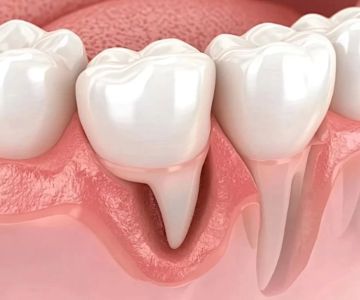How to Recognize the Signs of Tooth Root Decay: Symptoms, Causes, and Treatment
- 1- Early Signs of Root Decay
- 2- Common Symptoms of Tooth Root Decay
- 3- What Causes Tooth Root Decay?
- 4- How to Treat Root Decay and Prevent Progression
- 5- How to Prevent Tooth Root Decay
1- Early Signs of Root Decay
Recognizing tooth root decay early is crucial for preventing severe damage to your teeth. The initial signs often go unnoticed because root decay can occur beneath the gumline. However, there are subtle indicators that can help you identify the problem before it worsens.
Early symptoms include tooth sensitivity, especially when eating hot, cold, or sweet foods. If you experience discomfort while chewing, or if your gums begin to recede, it may be a warning sign of root decay.
2- Common Symptoms of Tooth Root Decay
As tooth root decay progresses, more noticeable symptoms start to appear. These symptoms include:
- Persistent tooth pain or aching in the affected area.
- Swelling and redness of the gums surrounding the tooth.
- Visible holes or dark spots on the root or surface of the tooth.
- Bad breath or a foul taste in the mouth.
- Loosening of the affected tooth as the decay worsens.
If any of these symptoms are present, it is important to see a dentist as soon as possible to prevent further damage and preserve your tooth's health.
3- What Causes Tooth Root Decay?
Tooth root decay typically occurs when the protective enamel on the surface of your tooth is worn down, exposing the more sensitive root beneath. This exposes the root to bacterial infections and acid from food and drinks, which can lead to decay.
Poor oral hygiene, gum disease, dry mouth, and a diet high in sugary foods are some of the leading causes of tooth root decay. Individuals who suffer from gum recession, where the gums pull away from the teeth, are at an increased risk of developing root decay.
4- How to Treat Root Decay and Prevent Progression
Treating tooth root decay depends on the severity of the condition. If caught early, root decay can often be treated with fluoride treatments or dental bonding. In cases of more advanced decay, a root canal or even tooth extraction may be necessary.
It is essential to follow the treatment recommendations provided by your dentist, which may include improved oral hygiene practices, prescription mouthwashes, and dietary changes.
For advanced cases, restorative dental treatments such as crowns, fillings, or root canal therapy may be recommended to restore the tooth's function and appearance.
5- How to Prevent Tooth Root Decay
Prevention is always better than treatment. To avoid root decay, practice good oral hygiene by brushing your teeth twice a day with fluoride toothpaste, flossing regularly, and visiting your dentist for routine check-ups and cleanings.
Avoid sugary foods and drinks, which can contribute to decay. Staying hydrated and using fluoride treatments or mouthwashes can also help protect your teeth and roots. Additionally, addressing any gum recession early can prevent exposure of the roots to harmful bacteria.
If you're at risk for root decay due to age, existing gum disease, or dry mouth, talk to your dentist about additional preventive measures and treatments.







 Westgate Dental Arts
Westgate Dental Arts Coventry Family Dental
Coventry Family Dental Familia Dental
Familia Dental Dr. Daniel S. Fife, DDS
Dr. Daniel S. Fife, DDS Dentistry At Suburban Square: Michael I. Wollock, DMD
Dentistry At Suburban Square: Michael I. Wollock, DMD Comfort Care Dental
Comfort Care Dental The Importance of Oral Health Education During Pregnancy for a Healthy Pregnancy
The Importance of Oral Health Education During Pregnancy for a Healthy Pregnancy Why Skipping Dental Checkups Can Lead to Bigger Oral Health Problems
Why Skipping Dental Checkups Can Lead to Bigger Oral Health Problems Advantages of Porcelain Dental Restorations
Advantages of Porcelain Dental Restorations Best Tips for Brushing Your Teeth Properly for Healthy Gums: Essential Techniques for Oral Health
Best Tips for Brushing Your Teeth Properly for Healthy Gums: Essential Techniques for Oral Health How Can Diabetes Cause Tooth and Gum Problems? Preventing and Managing Oral Health Issues
How Can Diabetes Cause Tooth and Gum Problems? Preventing and Managing Oral Health Issues Healthy Habits for Promoting Good Oral Health and Hygiene: Tips for a Healthy Smile
Healthy Habits for Promoting Good Oral Health and Hygiene: Tips for a Healthy Smile